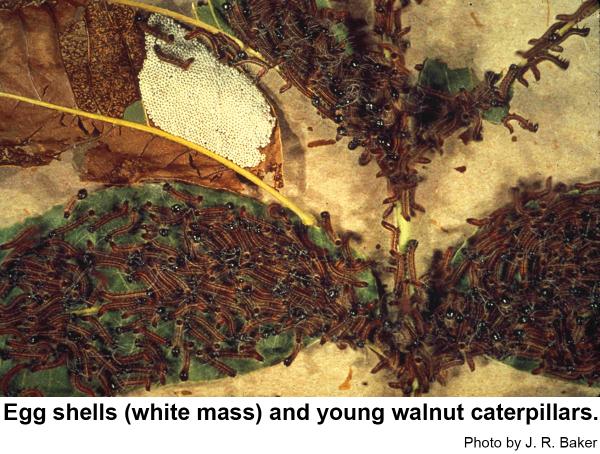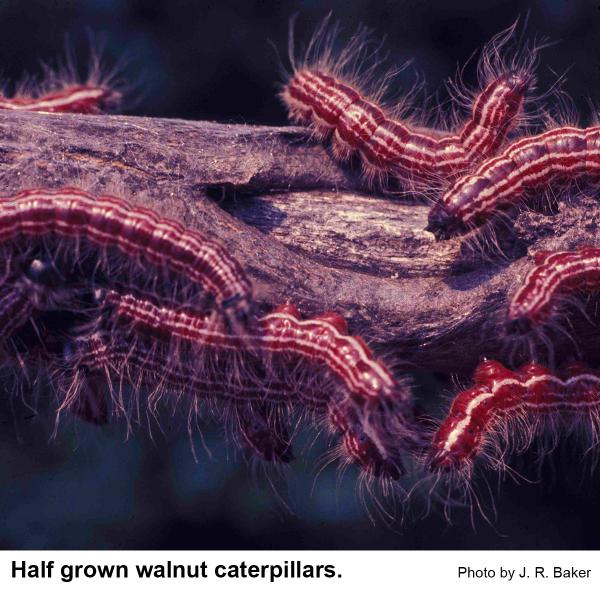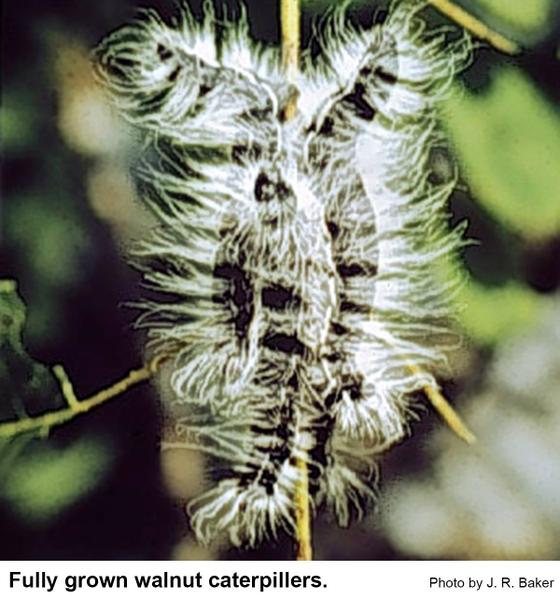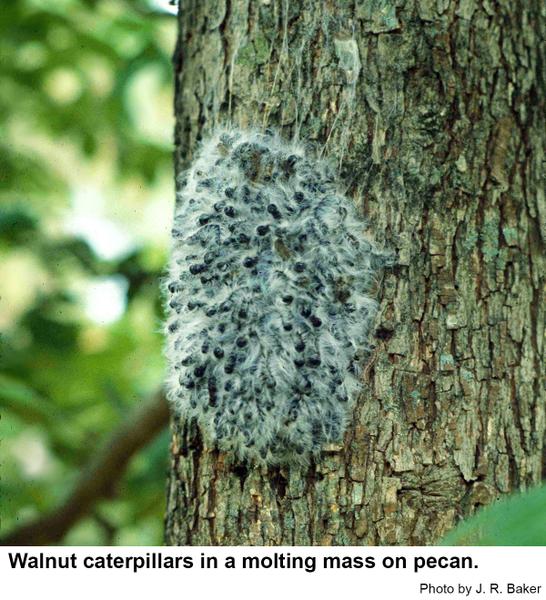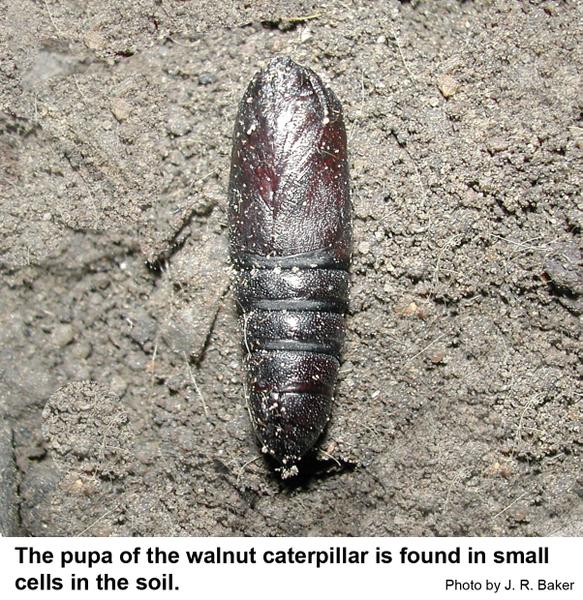Description and Biology
Walnut caterpillars, Datana integerrima, are the immature stages of tan and cinnamon-brown moths with wingspans almost 2 inch wide. They are one of the handmaid moths, perhaps so called because they are so attractive. Even though they feed on many kinds of trees and shrubs, at any one location they may be infrequent or rare. The moths emerge from the soil and lay their eggs in June and July. Each female usually lays from 120 to 880 pale green eggs in a closely spaced mass. Newly hatched caterpillars are pale green. Then they become reddish brown. Fully grow walnut caterpillars are black with conspicuous whitish "hairs" called setae. The larvae feed gregariously until they are ready to molt. Then they have a strange habit of crawling down onto the trunk in a group to molt. They leave behind a unique collection of molted skins. Fully grown larvae crawl or drop to the ground and crawl around looking for a place to dig in and pupate. We have two generations per year in North Carolina. They overwinter as pupae in the soil.
Host Plants
The walnut caterpillar is a widespread pest, and the worms are found on a wide variety of deciduous trees, but most of the time they feed on walnuts, pecans, and hickories. Trees completely defoliated two years in a row may be stunted.
Residential Recommendation
Because walnut caterpillars often feed high in trees, often they are not noticed until they crawl down to the trunk to molt in a dense, fuzzy, gray mass of large caterpillars. At that time they can be dislodged with a stick and trampled underfoot (if one has the stomach). These caterpillars are evidently tasty to birds and other predators because they almost never become abundant enough to cause serious defoliation. Sevin and pyrethroids give the best control if applied when the caterpillar are small.
References
- CaterpillarsThat Feed on Trees and Shrubs. Frank, S. D. and S. B. Bambara. 2009 (revised). Entomology Insect Notes, NC State Extension Publications.
- Walnut Caterpillar. Anonymous. 2019. Horticulture and Home Pest News, Iowa State University Extension and Outreach.
- Walnut Caterpillar. Anonymous. No Date. Field Guide to Common Texas Insects. Texas A&M AgriLife Extension.
- Extension Plant Pathology Publications and Factsheets
- Horticultural Science Publications
- North Carolina Agricultural Chemicals Manual
For assistance with a specific problem, contact your local Cooperative Extension Center.
This Factsheet has not been peer reviewed.
Publication date: Sept. 26, 2013
Revised: Oct. 18, 2019
Recommendations for the use of agricultural chemicals are included in this publication as a convenience to the reader. The use of brand names and any mention or listing of commercial products or services in this publication does not imply endorsement by NC State University or N.C. A&T State University nor discrimination against similar products or services not mentioned. Individuals who use agricultural chemicals are responsible for ensuring that the intended use complies with current regulations and conforms to the product label. Be sure to obtain current information about usage regulations and examine a current product label before applying any chemical. For assistance, contact your local N.C. Cooperative Extension county center.
N.C. Cooperative Extension prohibits discrimination and harassment regardless of age, color, disability, family and marital status, gender identity, national origin, political beliefs, race, religion, sex (including pregnancy), sexual orientation and veteran status.


